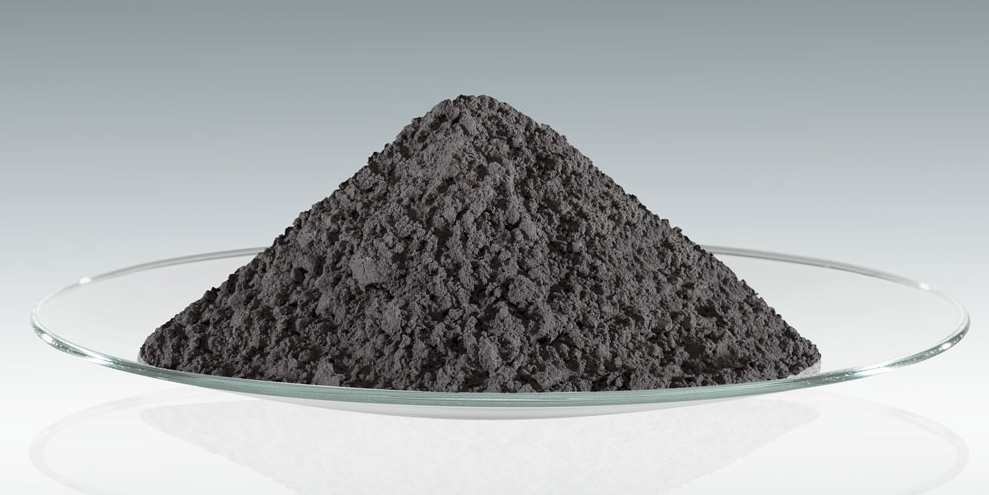Properties and Compounds of Rhenium

Properties and Compounds of Rhenium
Rhenium is a silvery-white rare metal with a high melting point. Its melting point ranks third among all elements, second only to tungsten and tantalum. Because metal rhenium is hard, wear-resistant, corrosion-resistant, and stable in the air, it is widely used in aerospace, electronics, petrochemical, and other fields. In this article, let's take a look at the properties and compounds of rhenium.

Properties and Compounds of Rhenium
The Properties of Rhenium
Physical Properties
Rhenium is silver-white metal or gray-to-black powder, with a melting point of 3186℃, a boiling point of 5596℃, and a density of 20.53g/cm³. Rhenium metal is very hard, wear-resistant, and corrosion-resistant.
Chemical Properties
The electronic configuration of rhenium is [Xe]4f145d56s2. The oxidation states of rhenium are 0, -1, +1, +2, +3, +4, +5, +6, +7, and the main oxidation states are +3, + 4, +5, +7. The chemical activity of rhenium depends on its aggregation state, and the powdered metal rhenium is active.
Rhenium is insoluble in hydrochloric acid, but soluble in nitric acid, and generates Perrhenic acid: 3Re+7HNO3→3HReO4+7NO+2H2O. It is also soluble in the ammonia-containing hydrogen peroxide solution to produce ammonium perrhenate: 2Re+2NH3+4H2O2→2NH4ReO4+3H2.
The Compounds of Rhenium
Rhenium Oxide
1. Re2O7
Re2O7 is a yellow solid with volatility and is the most common rhenium oxide. It dissolves in water and forms Perrhenic acid (HReO4).
2. ReO2
ReO2 is a dark brown solid substance with a monoclinic structure, a density of 11.4~11.6g/cm³, and a boiling point of 1363℃. However, ReO2 begins to decompose at 700°C, producing metal rhenium and rhenium hexaoxide. ReO2 has gettering performance and poor volatility. It can form perrhenate by co-melting with alkali in the air.
ReO2 is slightly soluble in water, insoluble in dilute acids, soluble in concentrated halogen acids, and easily reacts with nitric acid, hydrogen peroxide, etc. to generate rhenic acid. The preparation method of ReO2 is to reduce rhenium anhydride with hydrogen at 300 ℃ or decompose ammonium rhenate in an inert medium (argon, nitrogen) at 400 ℃. ReO2 can be used as a raw material for the reduction of hydrogen to produce metal rhenium and an organic compound synthesis catalyst.
3. ReO3
ReO3 is a red solid with a metallic luster. Rhenium trioxide is chemically inactive, insoluble in water, dilute hydrochloric acid, and dilute sodium hydroxide, but soluble in concentrated nitric acid and oxidized to Perrhenic acid.
Other Rhenium Compounds
Rhenium and sulfur vapor combine at high temperatures to form rhenium disulfide. The compound of rhenium and boron, rhenium diboride (ReB2), has extremely high hardness, similar to that of tungsten carbide, silicon carbide, titanium diboride, and zirconium diboride.
Rhenium reacts with fluorine, chlorine, and bromine in the halogen to form halides, such as rhenium tetrafluoride (ReF4), rhenium pentafluoride (ReF5), rhenium hexafluoride (ReF6), rhenium heptafluoride (ReF7), pentachloro Rhenium (ReCl5), Rhenium hexachloride (ReCl6), Rhenium trichloride (ReCl3), etc. ReCl3 is a trimeric red solid, a covalent compound, and is a non-electrolyte in solution. Tetravalent rhenium can form a variety of coordination compounds.
Conclusion
Thank you for reading our article, and we hope it can help you have a better understanding of the properties and compounds of rhenium. If you want to know more about rhenium, we would like to recommend you to visit Advanced Refractory Metals (ARM) for more information.
As a leading manufacturer & supplier of refractory metals across the world, Advanced Refractory Metals (ARM) is headquartered in Lake Forest, California, America. It provides customers with high-quality refractory metals such as tungsten, molybdenum, tantalum, rhenium, titanium, and zirconium at a very competitive price.
{{item.content}}
LEVE A REPLY
{{item.children[0].content}}
{{item.content}}






